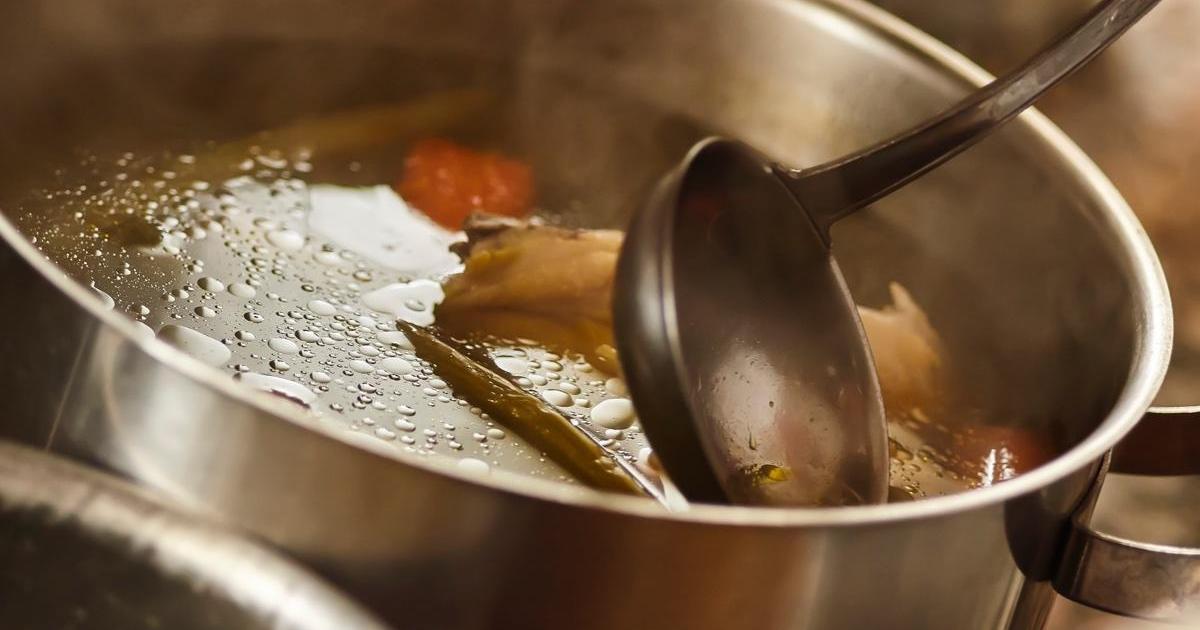Homemade Beef Stock (Brown Stock)
Unlock Flavor: Mastering Homemade Beef Stock
Store-bought stock is convenient, but nothing compares to the rich, deep flavor of homemade beef stock. It’s the foundation of countless delicious dishes – soups, stews, sauces, braises – and making your own is surprisingly easy. This isn’t just a recipe; it’s a culinary investment that will elevate your cooking to a whole new level. Forget those bland, watery stocks – let’s dive into how to create liquid gold!
Why Make Your Own Beef Stock?
There are several compelling reasons to ditch the boxed stuff. Firstly, flavor. Homemade stock boasts a complexity and depth that commercial versions simply can’t match. You control the ingredients, ensuring the highest quality and avoiding unwanted additives. Secondly, nutrition. Homemade stock is packed with collagen, gelatin, and minerals, offering potential health benefits. Finally, sustainability. Utilizing leftover bones reduces waste and makes you a more resourceful cook.
The Key to a Rich Stock
The secret to a truly exceptional beef stock lies in the long, slow simmer. This process extracts maximum flavor and collagen from the bones, resulting in a beautifully gelatinous and flavorful liquid. Don’t rush it! The longer it simmers, the better it gets. Skimming off any impurities that rise to the surface is also crucial for a clear, clean-tasting stock.
Beyond the Basics: Flavor Variations
While this recipe provides a classic foundation, feel free to experiment with different flavor combinations. Consider adding:
- Roasted vegetables: Roasting the bones and vegetables before simmering adds a deeper, more complex flavor.
- Herbs: Rosemary, sage, or marjoram can add a unique aromatic touch.
- Spices: A pinch of smoked paprika or a few star anise can create an interesting flavor profile.
- Mirepoix Variations: Swap out or add parsnips, leeks, or turnips to the classic carrot, celery, and onion base.
Storing Your Homemade Beef Stock
Once cooled, your homemade beef stock can be stored in several ways:
- Refrigerator: Store in airtight containers for up to 4 days.
- Freezer: Freeze in freezer-safe containers or ice cube trays for up to 3 months. This is a great way to have small portions on hand for quick use.
- Concentrated Stock: Reduce the stock further to create a concentrated base, which can be stored for even longer.
Frequently Asked Questions
Q: What kind of bones should I use?
A: The best bones are marrow bones, knuckle bones, and neck bones. A mix is ideal. You can ask your butcher to save bones for you.
Q: Can I use roasted bones?
A: Absolutely! Roasting the bones before simmering adds a deeper, richer flavor.
Q: How long can I simmer the stock?
A: At least 6-8 hours, but up to 12 hours is even better. The longer it simmers, the more flavorful it will be.
Q: What if my stock is cloudy?
A: This is usually due to impurities. Strain the stock through a fine-mesh sieve lined with cheesecloth to remove them.
Q: Can I skip the cheesecloth bundle?
A: While not essential, the cheesecloth bundle helps to keep the stock clear and flavorful. If you don’t have cheesecloth, you can tie the herbs and spices in a clean muslin cloth or even a coffee filter.
Ready to transform your cooking? Let’s get simmering!
Homemade Beef Stock
Ingredients
- 6-8 lbs Beef bones Leftover or purchased
- 1 medium Onion Roughly chopped
- 1 medium Carrot Roughly chopped
- 1 stalk Celery Roughly chopped
- 4 tsp Tomato paste
- 1 bay leaf Bay leaf
- 3 whole Peppercorns
- 1 sprig Parsley
- pinch Thyme
Instructions
- Place beef bones in a large stockpot and cover with cold water. Bring to a boil, then reduce heat and simmer for 15 minutes. Drain and rinse the bones.
- Return the bones to the pot and add the onion, carrot, and celery. Cover with 8-10 cups of cold water. Bring to a boil, then reduce heat and simmer for at least 6-8 hours, or up to 12 hours for a richer stock. Skim off any foam or impurities that rise to the surface.
- In a separate pan, heat a tablespoon of oil over medium heat. Add the tomato paste and cook for 2-3 minutes, stirring constantly, until it darkens slightly.
- Add the tomato paste to the stockpot. Tie the bay leaf, peppercorns, parsley, and thyme together in a cheesecloth bundle and add to the pot.
- Continue to simmer for another hour. Remove the cheesecloth bundle and discard. Strain the stock through a fine-mesh sieve lined with cheesecloth. Let cool completely, then skim off any solidified fat from the surface.
Discover more from Resoupies
Subscribe to get the latest posts sent to your email.



